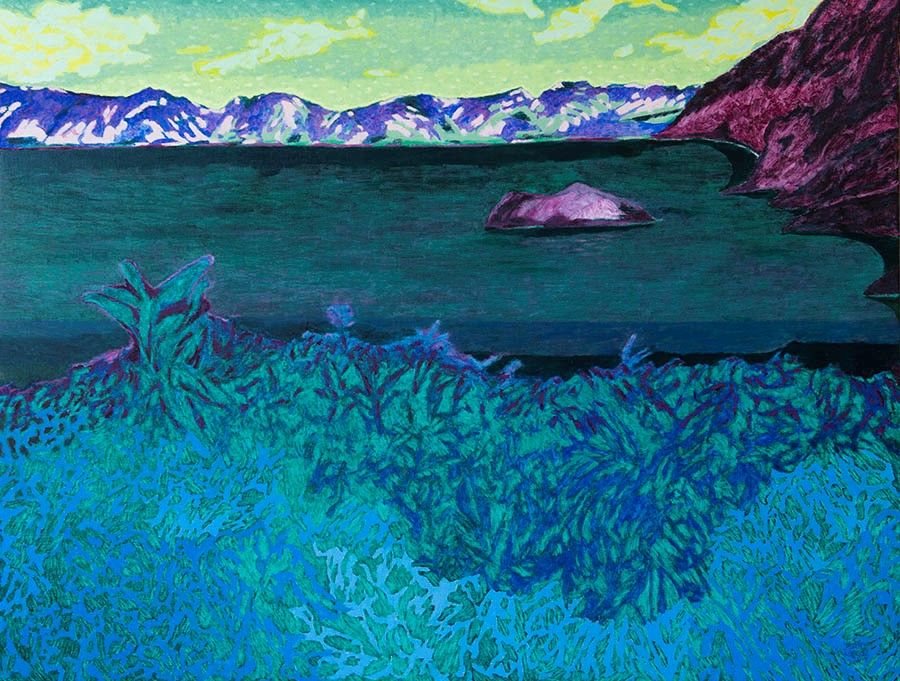17 January 2020
During the Christmas holiday break I visited the exhibition “dreamed paradises” by the Dutch painter Jeroen Krabbé at museum “De Fundatie” in Zwolle, The Netherlands. In these paintings, Jeroen Krabbé has been inspired by a journey to the French Caribbean, in the footsteps of Gaugain. Rather than reflecting reality in a photographic fashion, he translates his observations into different colors and new views, thus creating new perspectives, a new reality and altogether a new message. In fact this is what science is a about: being inspired and fascinated by observations in nature and the challenges of our world, adding the flavors and colors of knowledge, curiosity and excellence, and translating what “is” into what “can be”, thereby generating a new perspective on reality. In terms of health research: understanding mechanisms and finding solutions for questions arising from observations of nature and societal needs. More literally, science is art: during the RIMLS new year event, images where shown from the new STORM microscope, which can be considered as pure art, which is also true for the beauty of a novel shared decision tool by RIHS or the electrophysiological patterns of cultured neural cells at DCMN.
There is much discussion about the quality of art. Everyone agrees that Rembrandt was an outstanding painter but there is more debate about certain areas of modern art. Probably, quality of art can be defined by a combination of craftmanship and a new perspective on reality which inspires the spectator. Likewise, fierce debates are taking place on quality of science. Science in transition challenges the conventional, sometimes exaggerated quantitative way of judging the quality of science. But as in art, real excellence in science is about craftmanship, excellence and changing perspectives which have a significant impact.
There is probably one difference between art and science. Excellent art can be very individual. Science in contrast requires team effort and the quality of science is more than the sum of the individual talents of the members of the research group. This is why the concept of team science is so relevant. This first edition of a combined newsletter from our 3 research institutes symbolizes this very idea: combining efforts, exchanging ideas and inspiration for all our researchers.
I wish you much inspiration for the coming year and success both personally and in your professional activities. A year in which together we will thoroughly evaluate the way our research is being organized, creating a better creative environment.
Jan W.A. Smit
dean and vice-chair Executive Board
 Jeroen Krabbé, Hiva Oa 2, 2018
Jeroen Krabbé, Hiva Oa 2, 2018

During the Christmas holiday break I visited the exhibition “dreamed paradises” by the Dutch painter Jeroen Krabbé at museum “De Fundatie” in Zwolle, The Netherlands. In these paintings, Jeroen Krabbé has been inspired by a journey to the French Caribbean, in the footsteps of Gaugain. Rather than reflecting reality in a photographic fashion, he translates his observations into different colors and new views, thus creating new perspectives, a new reality and altogether a new message. In fact this is what science is a about: being inspired and fascinated by observations in nature and the challenges of our world, adding the flavors and colors of knowledge, curiosity and excellence, and translating what “is” into what “can be”, thereby generating a new perspective on reality. In terms of health research: understanding mechanisms and finding solutions for questions arising from observations of nature and societal needs. More literally, science is art: during the RIMLS new year event, images where shown from the new STORM microscope, which can be considered as pure art, which is also true for the beauty of a novel shared decision tool by RIHS or the electrophysiological patterns of cultured neural cells at DCMN.
There is much discussion about the quality of art. Everyone agrees that Rembrandt was an outstanding painter but there is more debate about certain areas of modern art. Probably, quality of art can be defined by a combination of craftmanship and a new perspective on reality which inspires the spectator. Likewise, fierce debates are taking place on quality of science. Science in transition challenges the conventional, sometimes exaggerated quantitative way of judging the quality of science. But as in art, real excellence in science is about craftmanship, excellence and changing perspectives which have a significant impact.
There is probably one difference between art and science. Excellent art can be very individual. Science in contrast requires team effort and the quality of science is more than the sum of the individual talents of the members of the research group. This is why the concept of team science is so relevant. This first edition of a combined newsletter from our 3 research institutes symbolizes this very idea: combining efforts, exchanging ideas and inspiration for all our researchers.
I wish you much inspiration for the coming year and success both personally and in your professional activities. A year in which together we will thoroughly evaluate the way our research is being organized, creating a better creative environment.
Jan W.A. Smit
dean and vice-chair Executive Board
